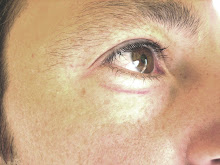CASIO A trusted name when it comes to cheap electronics.
First known in my head as making electronic time pieces but have been making components for cameras for just as long - their recent advance into consumer cameras is technological evolution. They did use Pentax lenses in their first line up. However Casio's most recent camera advancement blows away the competition, at least for a few weeks or months. But let it be known as the first. The "F1".
HYBRID DIGITAL VIDEO AND STILLS CAMERA
The Casio EX F1 is so feature rich that you will not find these settings on other cameras that the digital PDF manual on my computer was useless when out on location. Normally I find cameras fairly intuitve to pick up and shoot / change settings etc... I bit the bullet and spent an evening reading the manual.
General Handling
Since the camera does both Stills and Video the controls are designed with efficiency and are subsequently it is easy to change the various "desktop" settings [ie Image Size RAW+Jpeg / ISO / WB / EV / fps] without having to scroll through a menu system. Two dials on the top of the camera simpify the camera settings; one dial for Camera Mode [Auto / M / A / S / BS (best shot)] to single frame or continuous capture modes; the other dial for chosing the Shooting Mode [Continuous Modes / Single Frame]. The video has it's own dial to chose High Defnition / STD / High Speed Modes with the REC button in easy reach.
All tests were carried out with default settings on the Casio EX F1 with a full battery pack and an 8GB 30MB/s Class 6 SDHC High Performance SanDisk Extreme III memory card.
Camera Settings
A typical digital camera with x12 optical zoom features that you would expect to find on other compact digital cameras - maybe not as feature full as a digital SLR.
Burst Capture
Having turned the dial to Continuous Shutter Mode we can now have some fun selecting different rates of capture. The camera buffers 60 frames at Full 6MP Resolution. My concept for my recent film uses the well known Bullet Time effect used by Michel Gondry in the Rolling Stones video "Like a Rolling Stone". The camera saves 60 frames over a period of time that you can define - from 60seconds [1fps] down to 1 second [60 fps]. This is easily found and changed on the same "desktop" settings.
Video Settings
Full HD [1080i / 60fields per sec]
At Full HD the video playback on screen seemed OK to start with but ended up having a fair amount of artifacts even with the camera on a steadycam setup or tripod. The main problem seems to be that the interlaced fields produce noise.
HD [720p / 30fps]
Is adequate for my requirements and has no frame drop out and much less noise.
High Speed [512x384px / 300 fps]
In comparison with the 600 fps and 1200 fps which are fun but are far too compressed to use in video prodcution, the 300 fps setting produced a usable image. The sequences are slightly pixelated in comparison to the HD modes but using Streamclip I was able to get export it into a usable format.
Convergence
CASIO have broken the boundary between camera stills and video by having a 60 frame burst capture rate in camera mode and a good attempt at 300 fps High Speed video.
Can it be recommended?
I am really confused by it - really unsure whether it is a camera I can get along with but it does have it all - it is packed with features - it is the first one of a kind. And in so being THE FIRST the Casio EX F1 strides well above other prosumer cameras.
Subscribe to:
Post Comments (Atom)

No comments:
Post a Comment